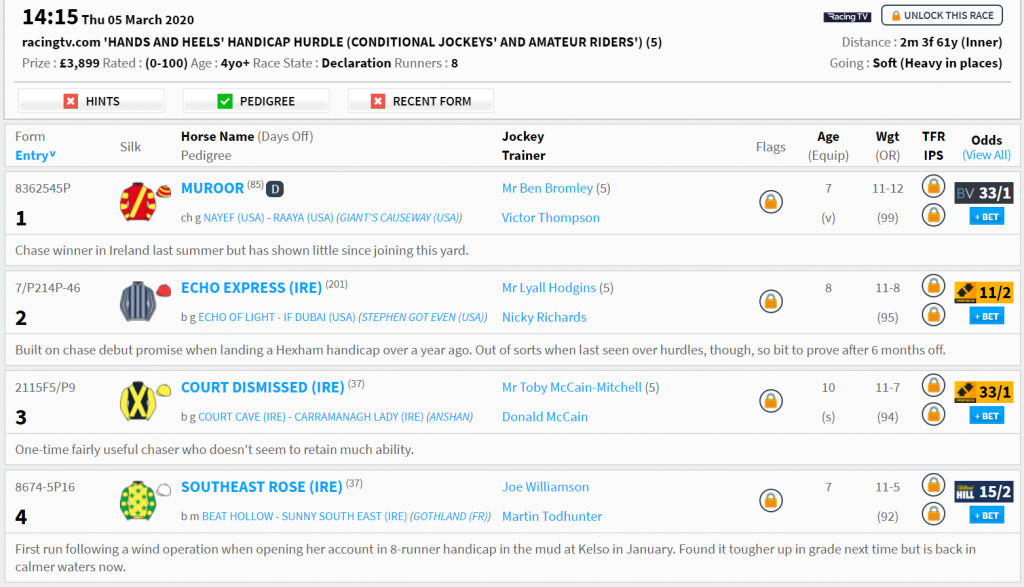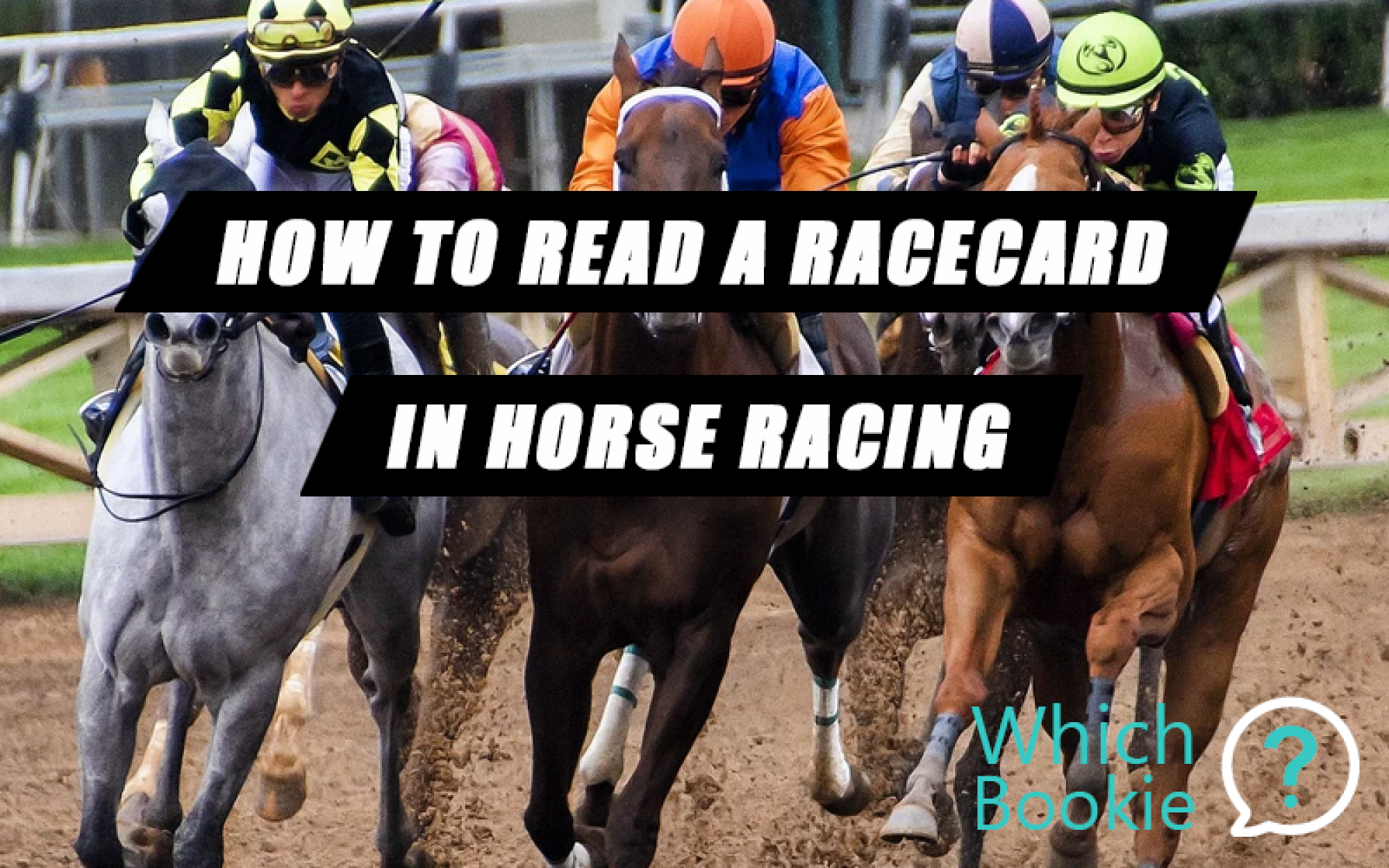
Exploring new bookmakers can be a rewarding experience for avid bettors. The competitive nature of the online betting industry means that new bookmakers often strive…
When selecting a horse to bet on, a racecard is an essential tool which provides a lot of useful information about each runner in the race. However, if you’re relatively new to horse racing, they can be quite confusing.
In this article, we’ll be taking a look at racecards and explaining what each piece of information means on them.
Firstly, not all racecards are the same. They usually contain a similar set of information but depending on the source of the racecard, the information may be displayed in various layouts. However, once you have an idea of what information is displayed on a racecard, you should be able to find your way around them easily enough.
Let’s take a look at an example of a racecard for a horse race taking place today. You can click on the image below to make it bigger.

The first thing we see on the race card are details of the race itself. These include:
Next, we see a list of the horses running in the race. For each horse, there is useful information which we can use to determine how likely they are to win.
The big bold number down the side of the racecard alongside each horse is the horses number which is usually displayed on the horses saddle cloth. The number is assigned by track officials and is usually in order of weight with the horse with the most weight given the lowest number (1).
In the example above, there is a long row of numbers and letters above the horses number. This is the horses form figures. The numbers represent in which place the horse finished in their previous races with the number on the far right being their most recent race. You may also find letters in the form figures which represent the different actions listed below.
Many racecards also show the jockey’s colours. This can be useful to identify your horse when streaming horse racing live.
Alongside the jockey’s colours, the name of the horse is displayed and below this you will find the horses pedigree or breeding. For some, this is an important piece of information as you can see the success of parents and siblings of the horse which may reflect on how successful this horse will be.
You’ll notice a number next to the horses name. In this example, this is the number of days since the horses last race. Occasionally, there will be a second number alongside the first. This means that the horse has ran since but in a different type of race such as jumps or flat.
Next, we have the name of the jockey and the owner of the horse. Alongside the jockey’s name, you may see a number. This is the weight allowance which is given to horses ridden by apprentice jockeys. The reduction in weight is dependent on the experience of the jockey.
In the Age column, we have the age of the horse. You’ll notice that some horses have a letter underneath their age. These letters refer to the equipment used by the horse in the race.
In the next column, we can see the weight the horse is carrying which includes the weight of the jockey as well as the weight of the saddle. The saddle may contain additional weights if needed due to the conditions of the race, whether the horse must carry a penalty or is in a handicap. The weight is two numbers which represent stones and pounds.
Underneath the weight, the official rating of the horse can be found. A horse is given an official rating after its first three runs and the rating is then adjusted based on the performance of the horse in subsequent runs. The horses official rating determines which grade of race it is eligible to enter and has an effect on the weight it carries. You may also find that some websites give their own ratings.
Lastly, the current odds of the horse to win the race are displayed at the corresponding bookmaker. These are not always the best odds available and so you should compare the odds yourself before placing your bet. There may also be betting offers available for the race which is another reason to shop about.
The example above shows a racecard for a jumps race. If you are viewing a racecard for a flat race, horses will start in the stalls. Therefore, the stall number (draw) will also be displayed. This can be an important piece of information as on some courses, horses in certain stalls have a significant advantage due to the course layout and travelling distances.
